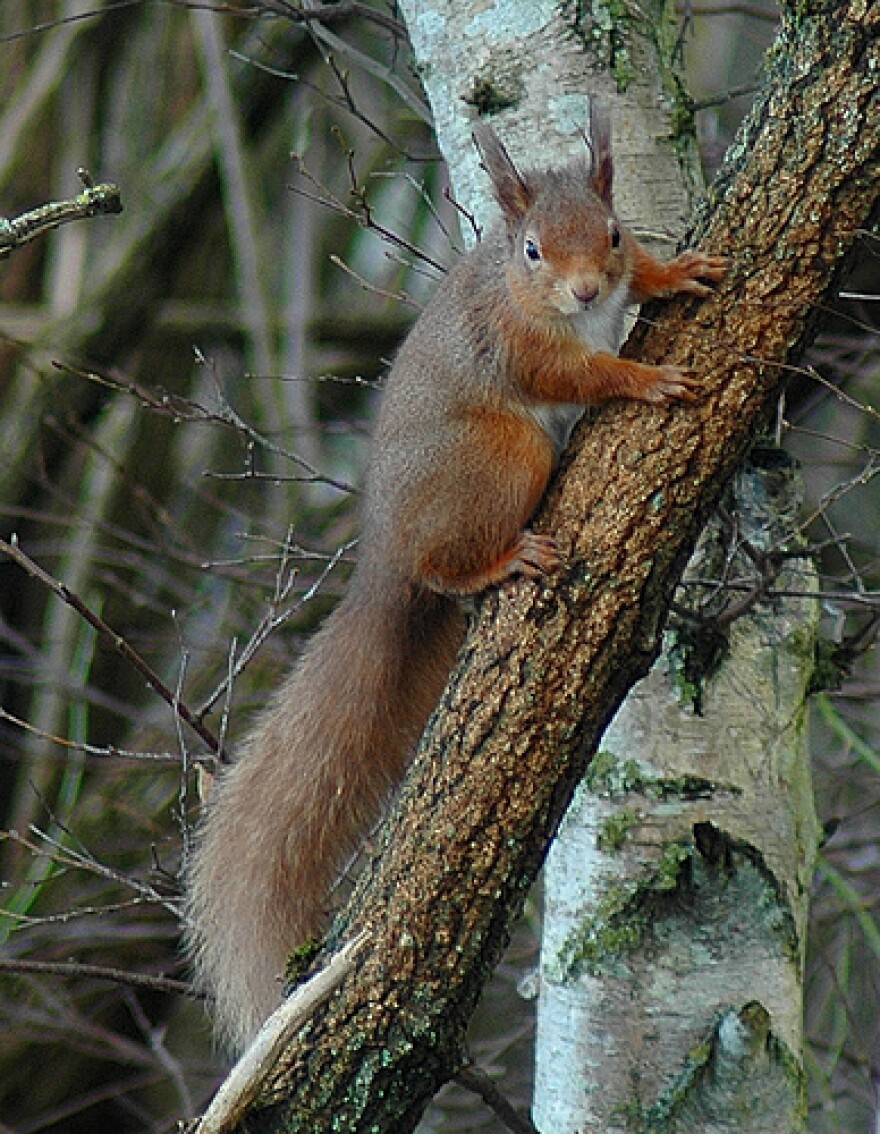The latter half of February begins the onset of peak breeding season for many furbearers and rodents. At Valentine's Day, tracks in the snow increase exponentially as wild mammals seek available mates.
For gregarious, social animals like familiar gray squirrels, late February brings spiral chases around tree trunks as rival male suitors conspicuously pursue females in estrus. For less social animals breeding season may force normally solitary animals to associate for a few days. Paired fisher tracks indicate larger males and smaller females associating with one another in contrast to their more typical loner status. One of the fisher's favorite prey species is the gray squirrel's smaller cousin: the red squirrel. Red squirrels are notoriously cranky little woodland trolls who maintain winter tunnels in the snow to reach hidden underground caches of conifer seeds - spruce, fir, hemlock and pine.
Red squirrels are renowned for antisocial, territorial behavior. Wildlife reference literature makes it clear that red squirrels are aggressive and unsociable, defending winter food caches ferociously against all other squirrels and birds. They famously become enraged at intruders, stamp their feet, twitch their bushy red tails and angrily chatter.
Red squirrel breeding begins in mid-February. It is apparently a problematic and very short-lived season devoid of Walt Disneyesque romance. According to Wild Mammals of New England by Alfred Godin red squirrels are promiscuous. Males seize females without any preliminary courtship and shortly after mating pairs resume a mutually antagonistic existence.
I guess I would add: “Happy Valentine’s Day!”








